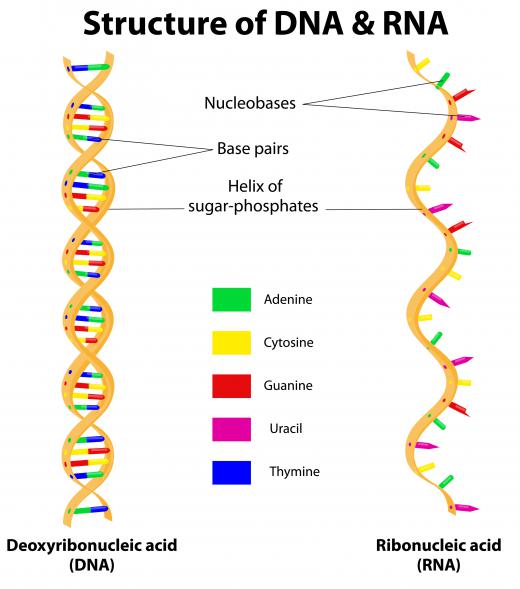What is Junk DNA?
 Mary McMahon
Mary McMahon
Junk DNA is DNA which does not appear to have any discernible function. However, the term “junk” is a bit misleading, as research on junk DNA has suggested that it may actually play an important role in the evolutionary history and lives of many organisms. Rather than junk, this DNA may in fact be stored for a critical reason, and researchers have started exploring junk DNA with the goal of learning more about it.
Some people refer to junk DNA as “noncoding DNA,” referencing the fact that it does not code proteins which express in the host organism's phenotype. Whatever you call it, the percentage of junk DNA in the genome is often quite high. In humans, for example, 95% of the genome is composed of noncoding DNA. Junk DNA appears to explain a large part of the differences in genome size between different organisms, as some plants and animals have a great deal of junk DNA, while others have less.

All sorts of information may be contained in junk DNA. For example, huge sections of noncoding DNA are what is known as “ultraconserved,” meaning that they have remained the same for millions of years. Scientists know that these sections are ultraconserved because they are identical in numerous organisms, sometimes in the case of creatures which are only distantly related. When you hear claims like “the genome of animal X and humans is 98% identical,” this is because of ultraconserved DNA.

By looking at the differences in junk DNA between organisms, researchers have been able to learn more about when these organisms diverged from common ancestors. The fact that noncoding DNA has been preserved for millions of years would seem to indicate that it has some sort of function, perhaps in the role of gene regulation, gene repair, or gene evolution. Noncoding DNA also appears to act as a buffer in the genetic code which may play a role in DNA replication.
There is some evidence that some of the sections in junk DNA were once active genes, leading researchers to refer to these sections as “pseudogenes.” At some point in evolutionary history, these genes were deemed unimportant or superseded by other genes, but they quietly remained in the background. Noncoding DNA may also play a role in the inheritance of disease and other traits, which means that it may not be junk after all.
AS FEATURED ON:
AS FEATURED ON:












Discuss this Article
Post your comments